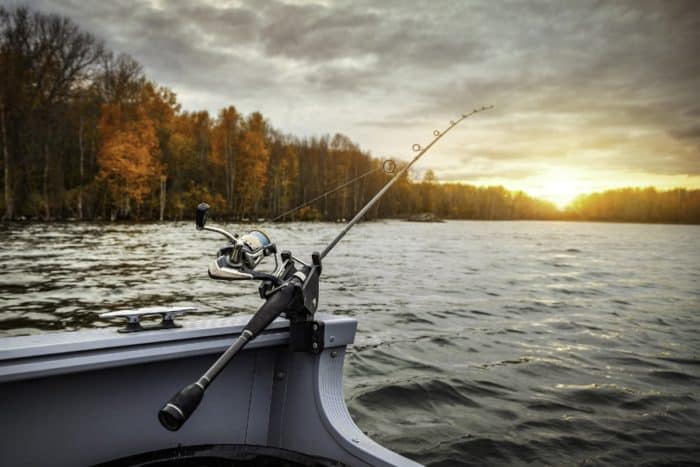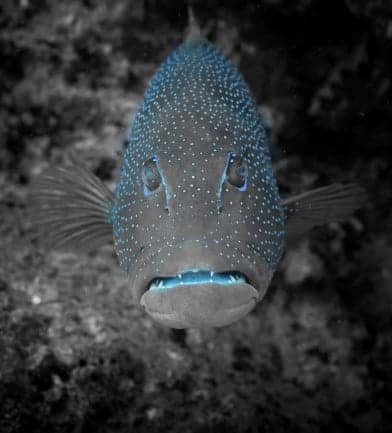Sailfish vs Swordfish vs Marlin: The Billfish Heavyweights
While the jury might still be out on this, most experts agree that the Sailfish might be the fastest fish in all the sea. Zooming past at a blistering 70 mph, the Sailfish can out swim pretty much every other fish found in any of the oceans. Not to be outdone, its cousin the swordfish has been clocked at speeds up to 60 miles per hour. The only other fish that comes anywhere close to that kind of speed is the Striped Marlin, which flies by at an impressive 50mph. It’s safe to say the billfish family are built for incredible speed.
You can already see that these three types of fish are naturally evolved to go up against each other. So what is it about the Sailfish, the Swordfish and the Marlin that fascinates anglers so? Is it their speed, their sheer size, or is it how they taste? Here is an in-depth sailfish vs marlin vs swordfish look that might shed some light on these questions.
Sailfish vs Marlin vs Swordfish
You need to know that Sailfish, Swordfish and Marlin are pretty much cousins; they belong to the same Billfish family. These are highly predatory fish that are fast and can also get really big and hunt all the oceans of the world from the Indian Ocean to the Atlantic and even the Gulf of Mexico.
Being as big as they are – Sailfish can grow to 10 feet long – 3m and weigh upwards of 220 pounds – 100kg while Marlin, especially Blue Marlin, can grow to 12 feet – 3.7m long and weigh up to 2,000 pounds – 907kg. Swordfish can grow nearly as big as marlin. With a top weight of around 1,400 pounds or 650 kg, they can also reach about 15 feet or 4.5 meters in length– you would be forgiven for thinking that they are an anglers’ favorite because of all that meat. The truth is that; some Billfish family members taste nice while others are nothing to write home about.
What they all offer, however, is an absolute thrill of a hunt. Every angler wants the bragging rights to having reeled in one of these massive predators. That’s how much of a fight they will give you. It’s also one of the main reasons why they are a popular target for catch and release sports anglers. They are strong, extremely agile, very acrobatic, fast, lean, and downright dangerous to catch.
That being said, Sailfish, Swordfish and Marlin aren’t exactly the same. Here are some key differences between these three fish.
Types of Marlin
As if these massive fish needed anything else to make them even more fascinating, it should be noted that there isn’t a single species of fish called Marlin, Swordfish or Sailfish. They all come in a host of different shapes and sizes – each type having its own unique identifier.
Marlin, for example, comes in four different types:
- Blue Marlin
- Black Marlin
- White Marlin
- Striped Marlin
Each of these different types of Marlin has something that sets them apart from the rest of the family. For example, Black Marlin are the fastest in this family while Blue Marlin are the largest, White Marlin are the most agile while Striped Marlin are the prettiest.
Types of Swordfish
Swordfish can be found in oceans around the world. There are three subspecies that have been identified.
- Atlantic swordfish
- Mediterranean swordfish
- Pacific swordfish
As their names suggest, they are spread out geographically. The largest of the three subspecies is the pacific swordfish.
Types of Sailfish
Like their cousins the Marlin and Swordfish, Sailfish also come in a wide array of different subspecies. Unlike their cousins, however, they only have two:
- Atlantic Sailfish
- Pacific Sailfish
It should be mentioned that there is an on-going debate whether these two types of subspecies are really any different from one another. Some experts say that the Atlantic Sailfish is slightly smaller and more brightly colored than the Pacific Sailfish. In contrast, others say that there isn’t that much of a difference to warrant dividing them into subspecies.
The experts who say that there is no real difference claim that the DNA of the two types of fish is practically identical; the same fin length and similar dietary habits are all arguments that they use to support their claims. That is one of the main reasons you will more often than not find Sailfish categorized as the same fish.
The Main Differences Between Sailfish, Swordfish and Marlin
On the outside, these three fish look quite similar. They even share the same diet, but that doesn’t mean that they are the same fish. They are some differences that set them apart from one another. Here are the key differences between Sailfish, Swordfish and Marlin:
Physical Appearance
Whenever you want to differentiate between two members of the same species, your best bet is to start by taking note of their respective physical appearance. Sailfish, Swordfish and Marlin aren’t an exception to this rule, and the first big difference you will notice is the shape of their dorsal fins.
- Sailfish: The fin is much bigger and looks like a sail, which is where the name “Sailfish” comes from.
- Marlin: The dorsal fin of a Marlin tends to be slightly different in that it peaks at the front and slopes gently towards the back.
- Swordfish: In terms of physical identifiers, the dorsal fin of the swordfish is where it really stands out. Unlike the more sail-like fins of its cousins, the swordfish has a dorsal fin that stands up very similar to that of a shark.
Hunting Habits
These three predatory fish also behave differently when it comes to hunting for prey in the open water. While Swordfish Marlin generally tend to hunt alone, Sailfish like to hunt together. They are incredibly coordinated in this endeavor, so much so that they have been lovingly nicknamed “the wolves of the sea.”
Pro Tip: Whenever you hook a single Sailfish, rest assured that there are many others nearby.
Here is a video of sailfish hunting:
What It’s Like to Fish for Marlin, Swordfish and Sailfish
Let’s start by saying that Marlin, Swordfish and Sailfish were designed to fight you as far as fishing for them is concerned. However, between the three, it’s the Marlin that is most difficult to land. They are agile and almost unstoppable. They keep going for hours.
Swordfish are often just as hard to land. The Marlin edges them out simply because they can get bigger, but a swordfish can put up just as much of a fight. Combine that with their size and their ability to snap a line at a moment’s notice, and they’re not an easy catch by any means. But that’s part of the point.
Sailfish, on the other hand, are extremely fast and will out your drag to the test. While they get tired faster than Marlin, they aren’t easy to land either; you need to be strong, have the right equipment, and focus.
All three of these fish have brute force on their side and are dangerous when reeling in. That’s mostly because they thrash about incessantly and use their bills as defense weapons, which can slice through your flesh or even impale you.
They violently shake from side to side to free themselves, and it’s not unheard of for anglers to be pulled into the water thanks to the sheer force exerted by a massive catch. It’s best to let them tire themselves out completely before bringing them anywhere near your boat.
Where Do Sailfish, Swordfish and Marlin Live?
These fish love warm waters and have been known to travel for long distances to stay in this type of water.
- Sailfish: They can be found in the Pacific, Atlantic, and Indian Oceans from about 50° N to about 35° S. They tend to stay within these points and only migrate during the warmest of months.
- Marlin: Marlin, on the other hand, are a bit more migratory than their cousins, the Sailfish. They swim worldwide searching for warm waters and tend to be further offshore, unlike Sailfish that can often be found even as close as three miles offshore. Marlin like to swim in deeper waters while staying close to the surface, while Sailfish have no issues inhabiting shallow waters of 100 to about 300 feet.
- Swordfish: As their subspecies names indicate, swordfish are found in the Pacific, Atlantic, and Mediterranean. They live in the water column and you’ll often find them between 180 meters and 580 meters. They prefer temperate waters all around the world. Florida is famous for swordfish as are places like Malindi, Kenya, the Gulf of Mexico and the Caribbean. Even up through the New England coast in the warmer months.
What’s strange about the Marlin is that every type has its own habitat preference (Blue Marlin – Pacific, Indian and Pacific Oceans staying in waters that range from 69 to 95°F in temperature; Black Marlin – Indo-Pacific Ocean staying in waters that range from 75 to 80 °F in temperature; Striped Marlin – Indo-Pacific oceans and stick to warm temperate and tropical waters; White Marlin – the Atlantic Ocean and like their water at 65+°F).
What Do Marlin, Swordfish and Sailfish Eat?
Typically, Sailfish like to prey on fish or other sea creatures that tend to inhabit or swim on the surface of the ocean. These include Mackerel, smaller Tunas, squid, Jacks, and flying fish. If you are going fishing for Sailfish, it’s advisable to use whatever local baitfish inhabits the water you intend to fish. There is a very good chance that it’s what the Sailfish in those waters hunt for anyway.
Marlin, on the other hand, tend to go for fresh Mackerel. However, that doesn’t mean that they are picky eaters. They are perfectly fine with hunting Tunas, Mahi, and even Bonefish.
Young swordfish feed on things like zooplankton. As these massive fish grow their tastes adapt. Typically their diet consists of things like squid and mackerel, silver hake, herring and more. Atlantic Swordfish will eat bluefish and butterfish as well. Even crustaceans make their way into the swordfish diet.
What Do Marlin, Swordfish and Sailfish Taste Like?
If you go for Blue Marlin, expect a mildly pronounced flavor with firm flesh that has a steak-like texture. Marlin flesh color varies from white to pink depending on what the fish hunts and eats.
On the other hand, Sailfish offers you many tastes from mild to strong depending on the fish itself. Its flesh tends to have a tinge of red, with darker flesh being found near the backbone.
A Pacific swordfish steak will have a very meaty texture, something that lends itself to many preparations but especially grilling. The flavor is more mild than many people expect. The flesh is pale and white when cooked. If you’re not a fan of “fishy” tasting fish, stick to the lighter meat. Trim off any deep pink and red areas, where the taste is stronger.
All three of these types of fish are prized catches from any angler willing to put in the work. While they might be different, one this is for certain, they are all extremely agile swimmers and rather difficult to catch. That being said, you will never forget the day you land one, either a Sailfish, Swordfish or a Marlin.
Categories: Fishing











